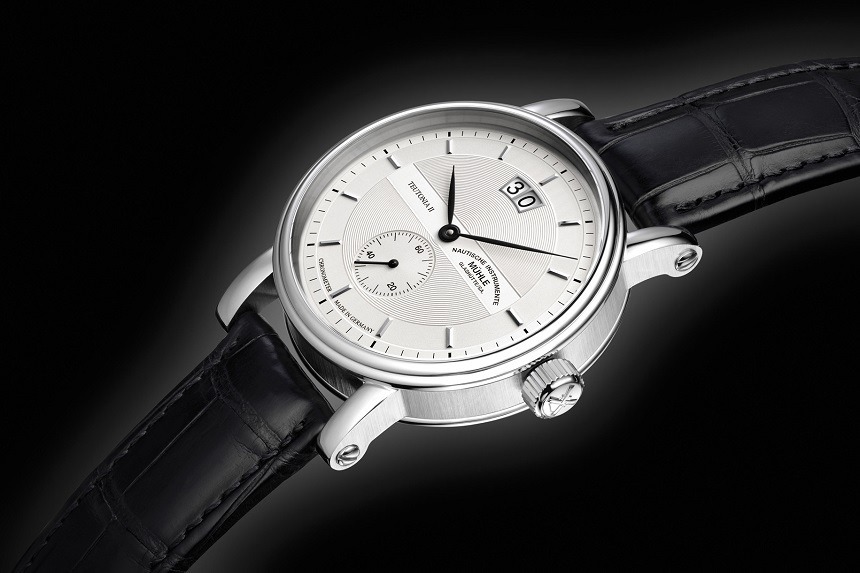
Every brand needs to be known for something. In the case of Mühle-Glashütte, the first thing that pops into my mind is humble excellence. With the Mühle-Glashütte Teutonia II Grossdatum Chronometer, a timepiece for professionals, the German brand has further established itself as one of those sneaky-clever periphery names giving consumers a whole lot of bang for their buck.
Mühle-Glashütte has a long history. Founded in 1869 in Glashütte, Germany, a hot-bed of horological happenings, the Mühle family set-up shop manufacturing measuring instruments. Through two world wars and countless political uncertainties, the Mühle brand grew and grew. Today, the fifth generation of leadership proudly manufactures timepieces on a relatively modest scale. I have always been a fan of Mühle-Glashütte for their watches’ unassuming competence. Where other brands may kick and scream for your attention, Mühle-Glashütte quietly takes its cues from the market and then creates a muted model that ticks most all the boxes of desirability, with very little extraneous trickery. To me, these watches look tough and honest, but not brutish or uncultured. A good example of Mühle-Glashütte’s ability to be both strong and subdued is their latest offering, the Mühle-Glashütte Teutonia II Grossdatum Chronometer.
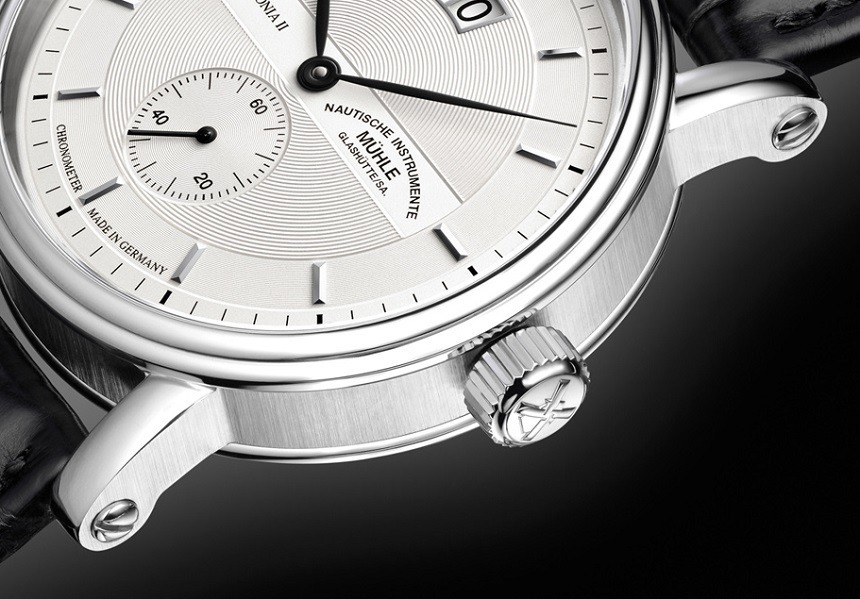
I find a lot to like about the clean design of the Teutonia. The case flanks are decorated with a vertical grain that works well against the polished edge of the bezel and case back. The large, polished crown too, bearing the logo of Mühle-Glashütte, stands out well as a contrast to the main body of the watch. The straight lugs of the case are moderately sized, with sturdy-looking screw bars to hold the crocodile strap in place. The strap itself is released by a stainless steel butterfly clasp and available in brown (to match the midnight blue dial) or black (to coordinate with the silver dial).
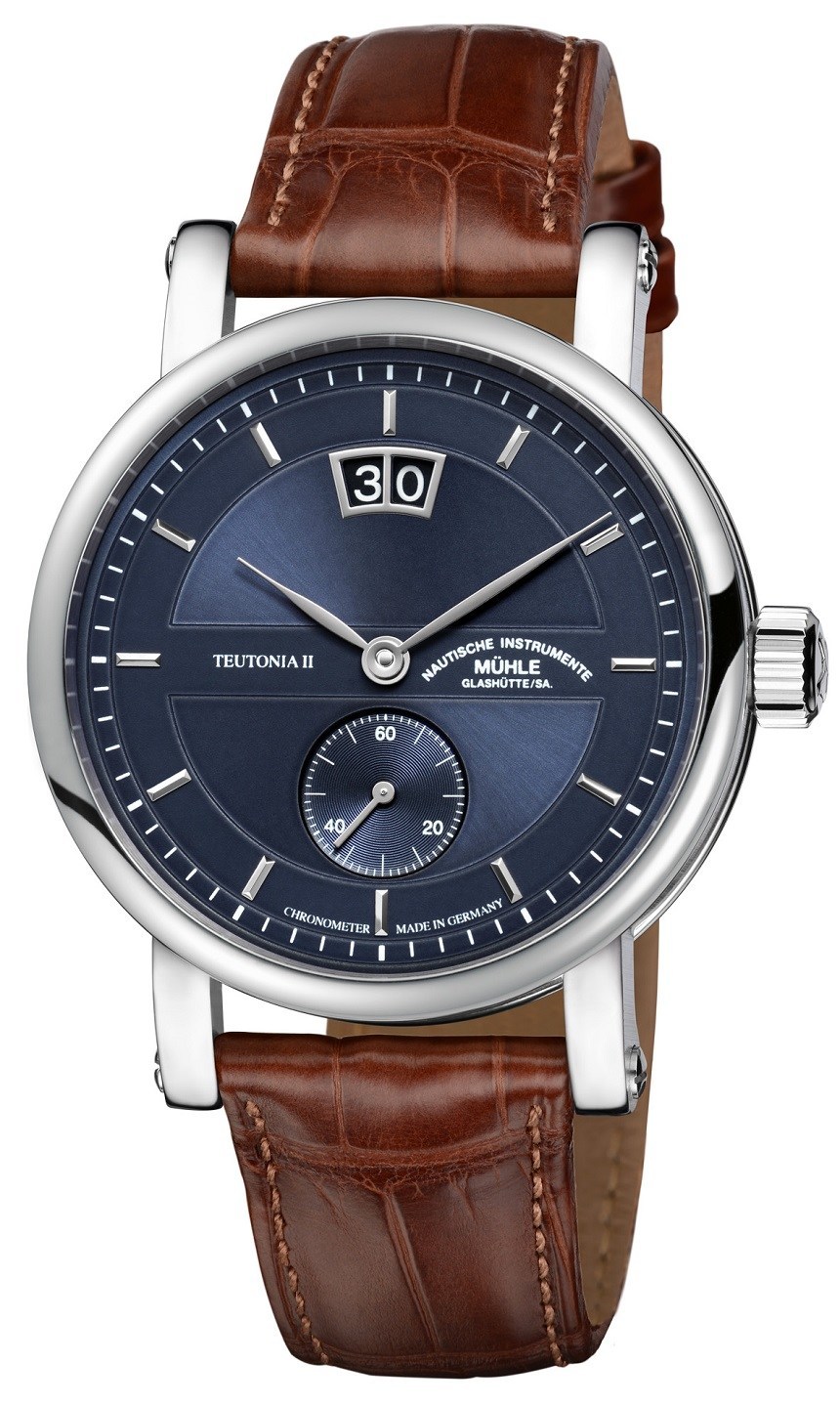
There will be 250 of each dial color available. Interestingly, the dials differ in more than color. The midnight blue dial is decorated with a ‘solarization’ pattern, which is probably more universally described as a sunburst. Contrastingly, though, the silver dial is accented by a more traditional circular guilloché pattern. Both dials are attractive in their own right. I think the silver maybe photographs a little more favourably than the blue, but then, the true beauty of a sunburst texture is better appreciated in real life.
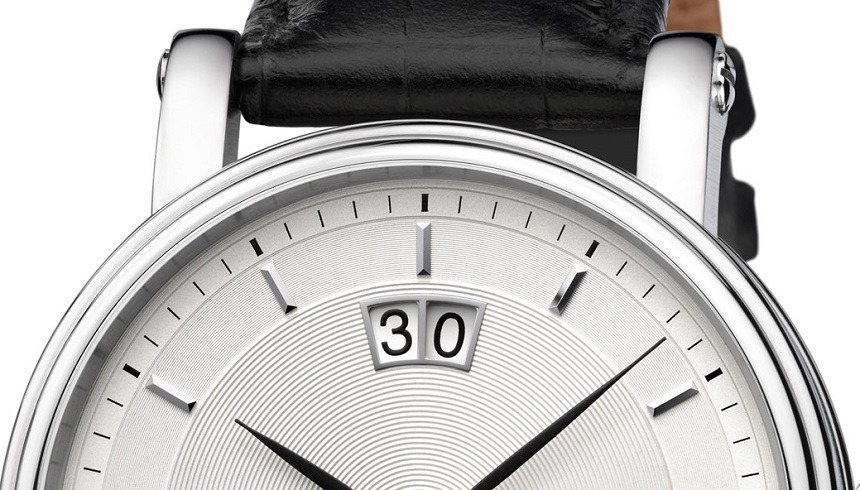
The focal point of the Mühle-Glashütte Teutonia II Grossdatum Chronometer is the big date complication that features in the watch’s name. A double window set between 12 o’clock and the centre of the dial displays the date via two separate date discs. This has always been one of my favorite complications and is a great way to make the date a feature rather than just a function. It brings to mind the A. Lange & Söhne interpretation of this complication (see a particularly nice example here), albeit at a much more attainable price point. One thing I would love to see in the future is a “grossdatum” without the split window – seeing the two large numerals next to one another without a frame separating them would certainly add the the large-date look.
Powering the Mühle-Glashütte Teutonia II Grossdatum Chronometer is an ETA 2892 calibre, with an added 3532 Grand Data module by Jaquet (that today functions as La Joux-Perret). The movement has been modified by Mühle to feature a woodpecker neck regulator, a customized rotor, and plate finishes. The big date has a rapid-set function and the movement has a pretty standard power reserve of 42 hours. The watch is tested in six positions and has received chronometer certification from the Glashütte Observatory.
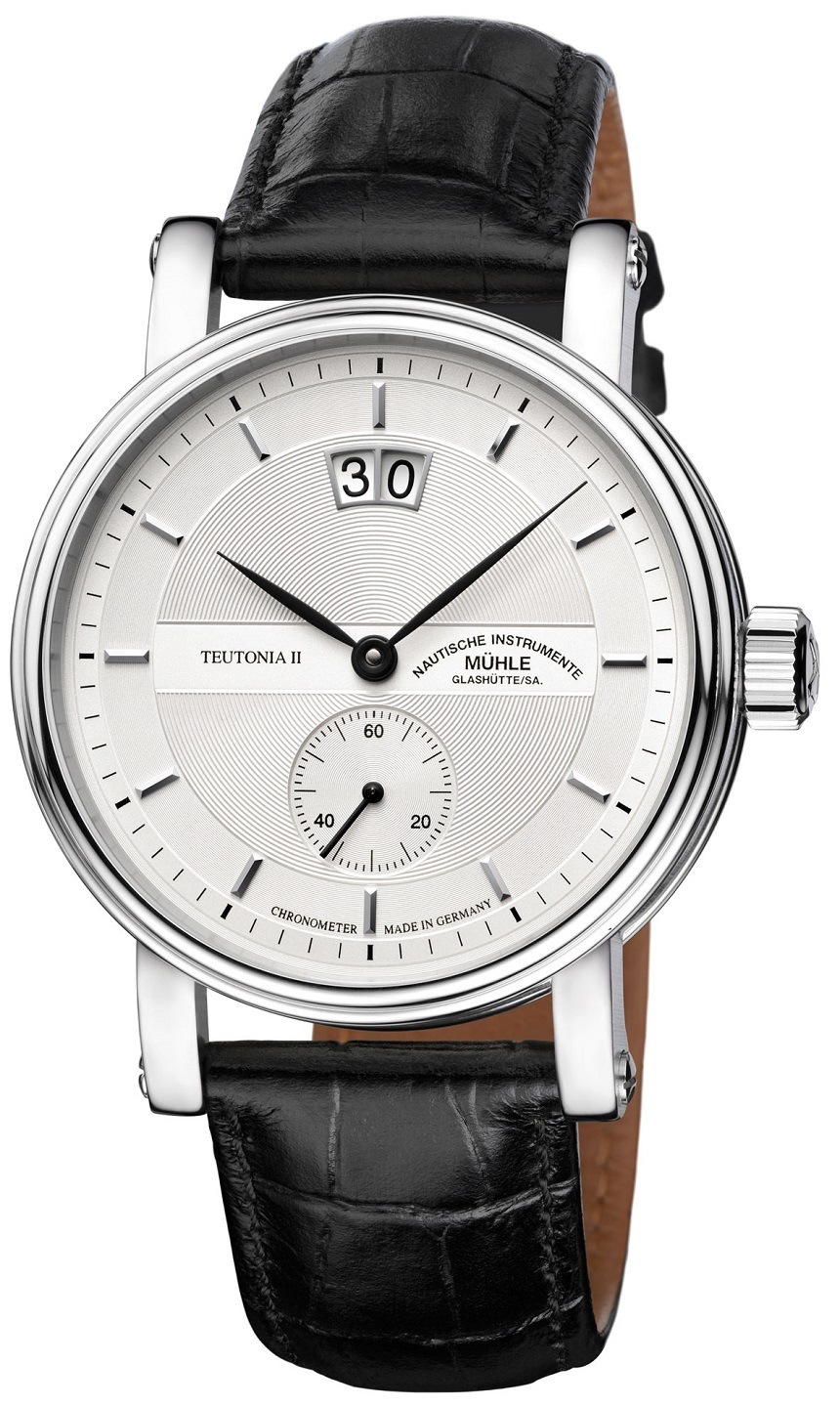
It is water resistant to 10 bar thanks in part to its screw-down crown. That’s quite an impressive depth tolerance for a watch that is clearly designed to be one of Mühle’s dressier models. It is that kind of unexpected functional bonus that makes the output from Mühle-Glashütte so endearing. Unfortunately, though, there is no luminous paint on the dial or hands, so the watch would not actually be readable that far beneath the sea – or, more importantly, under any low-light circumstances. Should you spend a significant amount of free time on the ocean floor, you needn’t remove your watch before descending. Don’t, however, wear it if you need to resurface at a specific time.
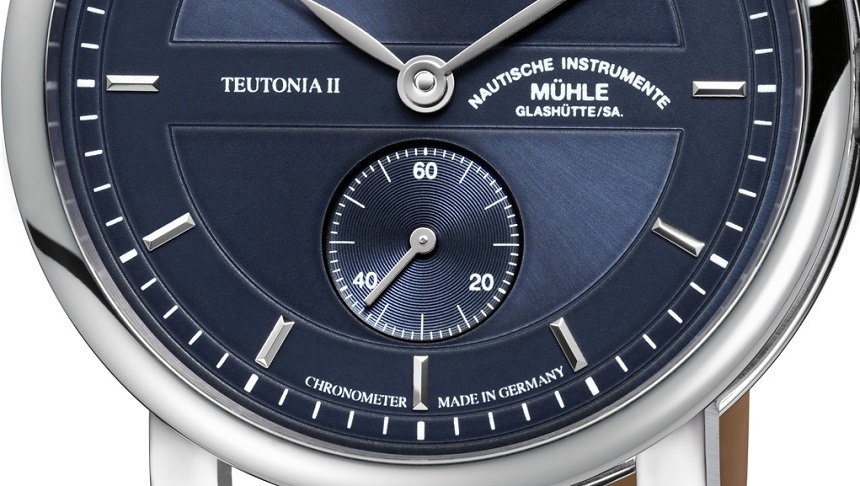
Sure, one could argue that the dial retains a classic feel due to the absence of lume – although we have seen more subtle ways of applying lume, such as small pips on the minute track and thin lines in the centres of the hands. The sub-dial at six o’clock balances with the big date and gives the dial a pleasing vertical symmetry. Even the branding is dealt with tastefully, with a stripe running from 9-3 o’clock, cutting a stark line through the guilloché pattern and sitting self-assuredly in the centre of the dial. One thing that is a bit of a mismatch with the finishing of the dial is the typography, especially the bog-standard font chosen for the model name. Brands should start paying attention to these details – printing Teutonia II in the same font as the logo would go a long way and imply greater attention to detail.
In summary, this is a positive release from Mühle-Glashütte. It sits well within their existing range, but offers consumers a new twist – something to get their teeth into. I am a huge fan of the dial balance, the big date complication and the case styling. With a price tag of £3,350 or just about $5,000, it is a watch aimed at professionals looking for a daily watch that will attract the attention of those who appreciate a classical, well-executed design. muehle-glashuette.de
